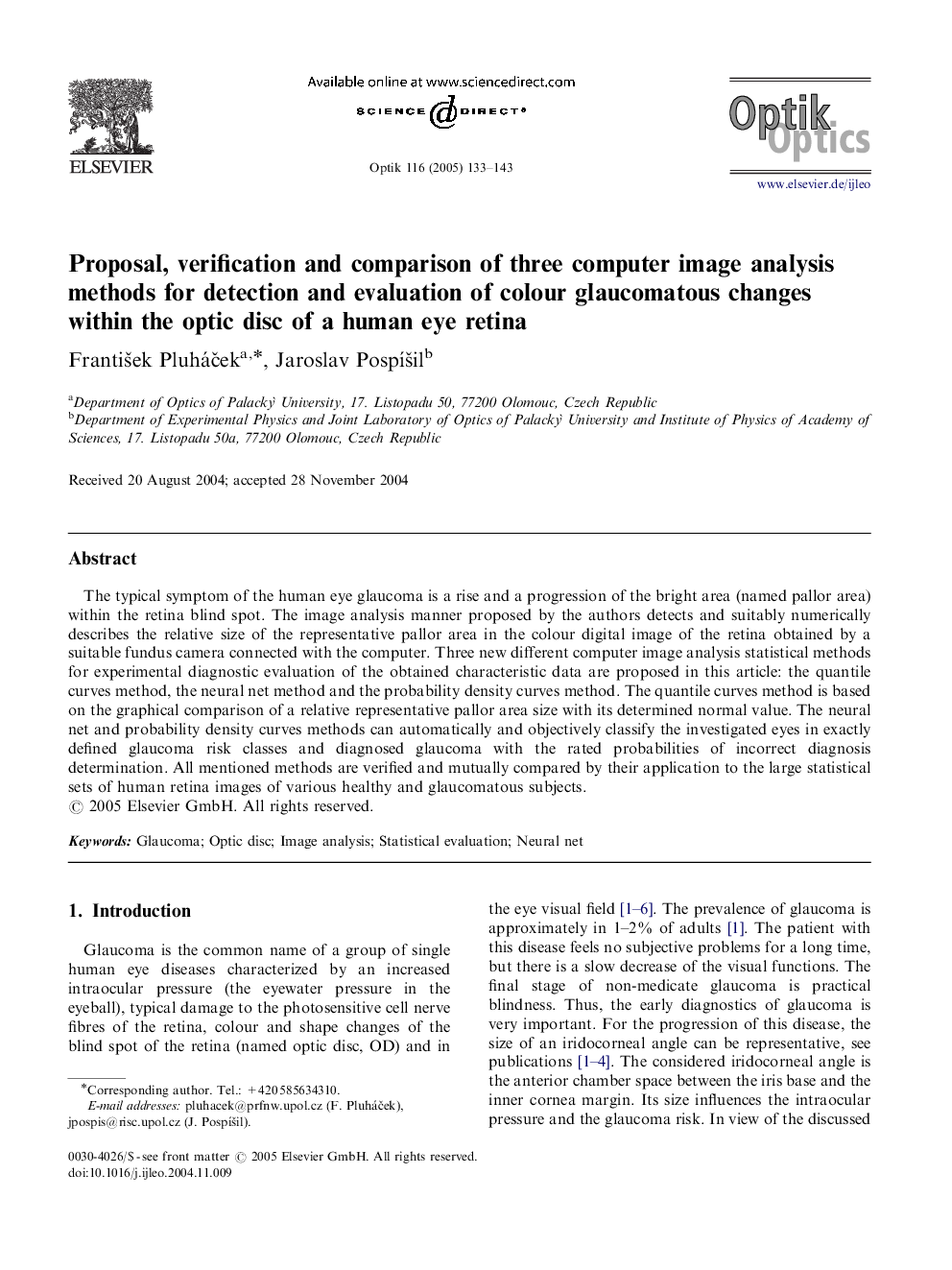| Article ID | Journal | Published Year | Pages | File Type |
|---|---|---|---|---|
| 10428785 | Optik - International Journal for Light and Electron Optics | 2005 | 11 Pages |
Abstract
The typical symptom of the human eye glaucoma is a rise and a progression of the bright area (named pallor area) within the retina blind spot. The image analysis manner proposed by the authors detects and suitably numerically describes the relative size of the representative pallor area in the colour digital image of the retina obtained by a suitable fundus camera connected with the computer. Three new different computer image analysis statistical methods for experimental diagnostic evaluation of the obtained characteristic data are proposed in this article: the quantile curves method, the neural net method and the probability density curves method. The quantile curves method is based on the graphical comparison of a relative representative pallor area size with its determined normal value. The neural net and probability density curves methods can automatically and objectively classify the investigated eyes in exactly defined glaucoma risk classes and diagnosed glaucoma with the rated probabilities of incorrect diagnosis determination. All mentioned methods are verified and mutually compared by their application to the large statistical sets of human retina images of various healthy and glaucomatous subjects.
Related Topics
Physical Sciences and Engineering
Engineering
Engineering (General)
Authors
FrantiÅ¡ek PluháÄek, Jaroslav PospÃÅ¡il,
